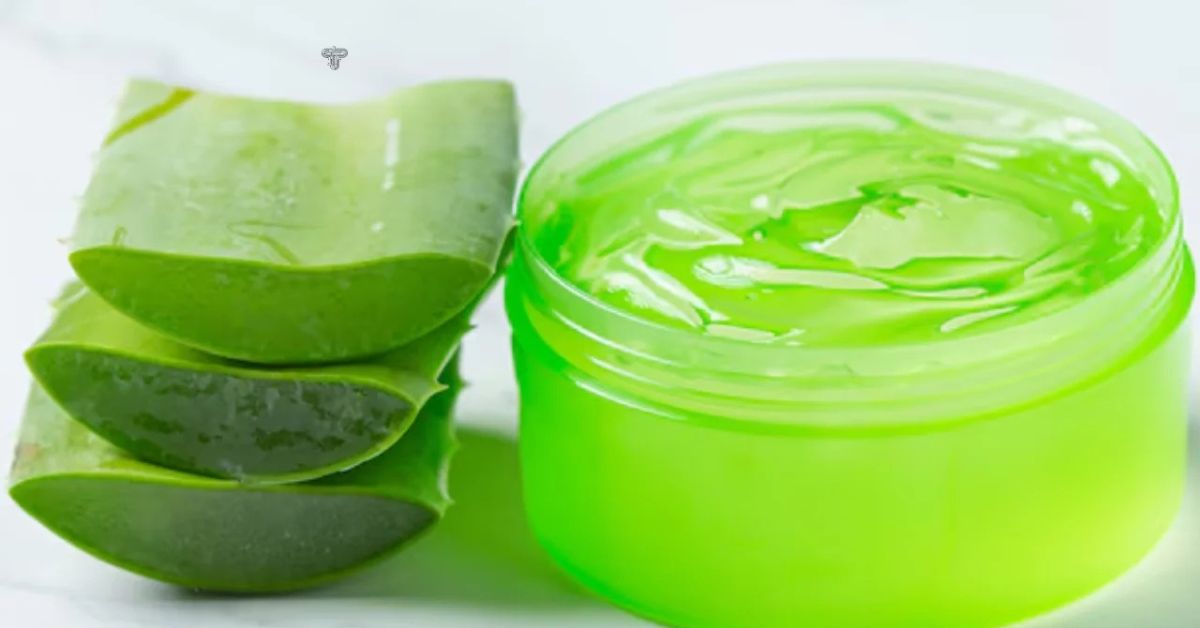HEALTH
Primary Cells vs. Immortalized Cells: Key Differences and Applications

Cell culture is a way scientists grow cells outside of living things to study them. In this article, we’ll look at the differences between primary cells and immortalized cells, what makes them special, and how they’re used in science. We’ll explain each type of cell, talking about what’s good and not so good about them in different kinds of research.
What is Cell Culture?
Cell culture is when scientists grow cells in a lab. It’s really important for learning about how cells work, what causes diseases, and how to make new medicines. People started doing cell culture in the early 1900s, but it got a lot better in the 1950s when they first grew human cells called HeLa cells. Since then, cell culture has gotten much more advanced, using new tools and methods to make better cell models.
There are two main types of cell culture: primary cell culture and immortalized cell lines. Each type has good and bad points, which make them better for different kinds of research. Scientists have to think carefully about which type to use based on what they want to study and what results they hope to get.
Primary Cells: Characteristics and Applications
Primary cells come straight from living tissue and are a lot like the cells in your body. They can only divide a certain number of times before they stop growing, which is called senescence. This happens because cells naturally get old and parts of their DNA called telomeres get shorter each time they divide. Primary cells are great for seeing how real cells in the body work because they keep many of the special jobs and features of the original tissue.
Here are some important things about primary cells:
Primary Cells vs. Immortalized Cells: Key Differences
- Primary cells come straight from living tissue, but immortalized cells are changed to keep growing
- Primary cells only live for a short time, usually dividing 50-70 times
- Immortalized cells can keep growing forever because of changes to their genes
- Primary cells are more like the real cells in your body
- Immortalized cells might change over time and become different from normal cells
- Primary cells are harder to grow and take care of
- Immortalized cells are easier to grow in large amounts
- Primary cells from different samples can be quite different from each other
- Immortalized cells give more similar results in different experiments
- Primary cells are better for studying how normal cells behave and react to drugs
- Immortalized cells are good for long studies and making lots of proteins
Primary cells are really useful for studying how normal cells work, what they’re made of, and how they make energy. They’re especially good for testing if new medicines might be harmful and for personalized medicine research. Because primary cells can be different from person to person, they’re great for looking at how different people might react to drugs or get sick. Primary cells also help make better models of diseases and check if what we learn from immortalized cells is true. Check out Cytion’s primary cell collection for lots of high-quality options, including cells from specific tissues and special food for growing primary cells.
Immortalized Cells: Characteristics and Applications
Immortalized cells, also called continuous cell lines, are cells that have been changed so they can keep growing forever. These cells don’t stop dividing like normal cells do, which means scientists can grow them for a long time. Cells can become immortal naturally, like cancer cells, or scientists can change them on purpose. Because these cells can keep growing, they’re really useful for long experiments and when scientists need a lot of cells.
Here are some important things about immortalized cells:
Key Characteristics of Immortalized Cells
- Can keep dividing and growing forever
- Easier to grow and take care of in the lab
- More similar to each other genetically
- Might not work exactly like normal cells
- Easy to get and not too expensive for research
Scientists use immortalized cells for lots of things, like making proteins, studying how genes work, and testing lots of new medicines quickly. These cells grow the same way each time, which makes experiments more reliable and easy to repeat. They’re also really important for making stable cell lines that produce special proteins, which is needed for making some medicines. But scientists have to be careful because these cells might change over time. Check out Cytion’s immortalized cell line collection for your research. We have well-tested cell lines that are good for many different kinds of experiments.
Key Differences Between Primary and Immortalized Cells
| Characteristic | Primary Cells | Immortalized Cells |
| Lifespan | Limited | Unlimited |
| Genetic stability | Higher | Lower |
| Resemblance to original tissue | High | Variable |
| Ease of culture | Challenging | Easier |
| Cost | Higher | Lower |
| Availability | Limited | Widely available |
| Applications | Physiological studies, drug toxicity | Protein production, gene expression studies |
Widely Used Immortalized Cell Lines in Research
HeLa Cells
HeLa cells were the first human cells grown in a lab back in 1951. They came from a woman’s cancer cells. These cells have helped scientists make many important discoveries, like creating the polio vaccine. HeLa cells grow really well and are tough, which makes them great for lots of different experiments. Scientists all over the world use them because they grow fast and can survive in many different conditions.
Scientists use HeLa cells for:
- Studying cancer: Learning how tumors grow and spread, and why some don’t respond to treatment
- Studying viruses: Finding out how viruses infect cells and making new treatments
- Testing new medicines: Checking if new drugs might work
- Changing genes: Studying what happens when you add or remove genes
Check out Cytion’s HeLa cell for your research. We have real HeLa cells and special food to grow them.
HEK293 Cells
HEK293 cells come from human kidney cells. Scientists use them a lot because it’s easy to put new genes into them and make them produce proteins. These cells have been changed to have different receptors and signaling molecules, which makes them great for studying how cells communicate and how drugs interact with cells.
Scientists use HEK293 cells for:
- Making proteins: Producing lots of proteins for studying their structure and function
- Studying genes: Looking at how genes work in human cells
- Developing drugs: Testing new drugs that target specific parts of cells
- Making viruses for gene therapy: Creating viruses that can deliver genes to treat diseases
Check out Cytion’s HEK293 cell products for your experiments. We have special types of HEK293 cells for different kinds of research.
Jurkat Cells
Jurkat cells are a type of human immune cell called T cells. Scientists use them to study how the immune system works, how cancer develops, and how HIV infects cells. These cells have helped scientists understand how T cells get activated and how to make new treatments for immune system problems. Jurkat cells can make a lot of a special protein called interleukin-2 when they’re stimulated, which is useful for studying how immune cells talk to each other.
Scientists use Jurkat cells for:
- Studying the immune system: Looking at how T cells get activated and work
- Researching T-cell leukemia: Understanding how this type of blood cancer develops
- Studying cell death: Learning how immune cells die in a controlled way
- Testing drugs for immune problems: Finding new medicines that can change how T cells work
Check out Cytion’s Jurkat cell products for your immune system research. We have Jurkat cells with special genetic changes or added features for different experiments.
CHO Cells
CHO cells come from Chinese hamster ovaries. They’re the most common cells used to make proteins for medicines. These cells grow quickly and can make a lot of proteins. Scientists have changed CHO cells to make them even better at producing proteins and adding the right sugar molecules to them. This makes CHO cells really important for making medicines.
Scientists use CHO cells for:
- Making medicines: Producing large amounts of proteins and antibodies for treatments
- Making antibodies: Creating high-quality antibodies for research and medical use
- Studying sugar molecules on proteins: Looking at how to improve the sugar molecules added to proteins
- Creating stable cell lines: Making cells that consistently produce specific proteins
Check out Cytion’s CHO cell products for your research on making medicines. We have special CHO cells that are really good at making proteins and special food to grow them in.
Applications of Cell Culture in Modern Science
Growing cells in labs has changed how scientists do research. Being able to grow and change cells in controlled conditions has helped us understand how cells work, what causes diseases, and how to make new treatments. Here are some important ways scientists use cell culture:
Drug Development
Testing new medicines to see if they work and are safe
Cancer Research
Studying how tumors grow and testing possible treatments
Vaccine Production
Growing viruses to make vaccines
Regenerative Medicine
Developing stem cell treatments and growing new tissues
These examples show how useful cell culture is for learning new things in science and making new medical treatments. Growing cells in labs gives scientists a controlled place to study complex biological processes. They can change specific things about the cells and watch how they react in real-time. Being able to change cells’ genes has helped scientists make discoveries faster in many areas of science.
Challenges and Ethical Considerations in Cell Culture
While growing cells in labs has really helped science, there are some challenges and things to think about:
- Contamination risks: Bacteria, fungi, or other tiny organisms can get into cell cultures and ruin experiments. Scientists have to be really careful to keep everything clean and check their cells regularly.
- Genetic changes: Cells might change over time, which could affect experiment results. Scientists need to check the genes of their cells often and not use cells that have been grown for too long.
- Wrong cell identification: It’s really important to make sure the cells are what scientists think they are. Sometimes, different types of cells can get mixed up, so scientists need to be careful to check their cells’ identity.
- Ethical concerns: Using cells that come from humans raises important questions, especially about getting permission and keeping people’s information private. This is especially important for cell lines like HeLa cells that have a complicated history.
- Difficulty repeating experiments: Different labs might get different results because of small changes in how they grow cells. It’s important for scientists to write down exactly how they do things so others can copy their experiments.
- Not exactly like real tissues: While growing cells flat in dishes is useful, it’s not the same as how cells grow in 3D in the body. Scientists are working on new ways to grow cells in 3D to make them more like real tissues.
Scientists have to follow strict rules and think carefully about what’s right when they do their work. This includes getting permission from people before taking their cells, keeping good records of where cells come from and how they’ve been changed, and following guidelines for doing research responsibly. Learn about how Cytion makes sure to do research ethically, including how we check our cells carefully and are open about where they come from.
Conclusion
Understanding the differences between primary cells and immortalized cells is really important for scientists to choose the right cells for their research. Primary cells are more like the cells in your body, but immortalized cells can grow for a long time and are easier to use for big experiments. Scientists pick which type to use based on what they want to study and what kind of results they need.
Both types of cells are important for learning about how cells work, what causes diseases, and how to make new medicines. Primary cells are great for studying how normal cells in the body work and how they react to things. Immortalized cells are good for testing lots of new drugs quickly and making large amounts of proteins. By choosing the right type of cell and using them carefully, scientists can learn new things and make important discoveries.
As scientists come up with new ways to grow cells, like 3D cultures and tiny organ-like structures called organoids, they’re getting even better at studying cells in the lab. These new methods are helping to make lab experiments more like what happens in the real body.
Ready to start your own cell experiments? Check out all the cell culture products Cytion offers to find the perfect tools for your research. We have high-quality cells, special food for cells, and other things you need to do great experiments in the lab. Whether you’re working with primary cells or immortalized cells, Cytion has the tools and knowledge to help you get reliable results in your cell culture research.
HEALTH
Gel Ooru: A Journey into Heritage and Meaning

‘Every culture has its own set of unique words that are tied to history, land, and lifestyle. One such word that holds charm and curiosity is gel ooru. It’s a term that echoes cultural roots, connects people to their heritage, and tells a story far beyond just a literal meaning. When we explore gel ooru, we uncover not only its etymology but also the emotions and values it represents. Whether you’ve heard it in a song, a traditional saying, or from someone reminiscing about their past, gel ooru invites a deeper dive into its significance.
What Does Gel Ooru Mean?
Gel ooru can be interpreted as a term referring to one’s native place or village. In some South Asian languages, particularly in Kannada or other Dravidian roots, the phrase is often used to describe one’s hometown or ancestral land. It’s not just a place—it’s an identity. The very sound of gel ooru brings to mind images of fields, childhood memories, old temples, and simpler times. It speaks to where someone comes from, both geographically and emotionally.
The Emotional Weight Behind Gel Ooru
For many, gel ooru isn’t just about geography. It’s where their grandparents lived, where childhood summers were spent, or where family traditions were passed down. Even for those who’ve left their gel ooru for education or work in cities, there’s always a tug at the heart when they speak of it. The phrase holds a blend of nostalgia and pride. It’s common to hear someone say they are going “back to gel ooru,” especially during festivals or vacations. That phrase alone can light up conversations, bringing warmth and fond memories.
How Gel Ooru Shapes Identity
In rural or even semi-urban societies, gel ooru is tied directly to a person’s identity. People often introduce themselves not only with their name but also by mentioning their gel ooru. It gives a sense of belonging and roots. For instance, in traditional communities, knowledge of someone’s gel ooru helps understand their background, dialect, customs, and even cuisine preferences. It is part of the social fabric that binds people together with a shared understanding of their origins.
Language and the Cultural Ties to Gel Ooru
The use of the term gel ooru across generations shows how language carries culture. Whether it’s spoken during storytelling, sung in folk songs, or written in local literature, it is a reminder of the deep respect for one’s birthplace. Language preserves emotions, and gel ooru is one such emotional keyword. It doesn’t need translation because its meaning is felt more than explained. Even the way the word is pronounced often carries a lilt of affection and pride.
The Connection Between Gel Ooru and Traditions
Every gel oor’u comes with its own traditions—festivals celebrated uniquely, local deities worshipped in age-old temples, or specific foods cooked during harvest seasons. These traditions are often exclusive to that specific place and make it unique. A person might fondly recall the festival celebrations or community rituals that made their gel oor’u special. These traditions are more than routines; they’re expressions of culture, and gel oor’u becomes a vessel that carries them across time.
Why People Return to Their Gel Ooru
No matter how far someone travels, there’s often an innate desire to return to their gel oor’u. This is especially visible during festival seasons when cities empty out as people travel back to their native villages. It’s a time for reconnecting with family, tending to ancestral homes, participating in age-old rituals, and simply soaking in the slower rhythm of rural life. The peace and simplicity found in gel oor’u are hard to replicate elsewhere. It offers a break from modern hustle and serves as a reminder of one’s simpler roots.
Changing Faces of Gel Ooru in the Modern Age
With the spread of urbanization, many gel oor’us have evolved. Roads are paved, new buildings are constructed, and lifestyles are slowly shifting. However, while the outer appearance may change, the soul of the place often remains intact. Elders still recount old stories, traditional customs are preserved, and nature continues to be a vital part of daily life. Interestingly, many young professionals are now returning to their gel oor’u, driven by the need for peace, affordability, and connection with the land. This reverse migration gives a new dimension to what gel oor’u represents in today’s world.
The Role of Gel Ooru in Literature and Cinema
In many regional stories, novels, and films, gel oor’u serves as a backdrop that grounds the narrative. Characters often travel from cities to their gel oor’u and go through transformative experiences. The journey back becomes symbolic—a return to values, authenticity, and inner peace. Filmmakers and authors use gel oor’u to highlight contrasts between urban and rural life. These stories often carry deep moral and emotional lessons, where the village or native place becomes almost a character itself.
Preserving the Essence of Gel Ooru
As time goes on, there’s an increasing need to preserve the soul of gel oor’u. That doesn’t mean resisting progress but embracing it while holding on to traditions. Preserving old buildings, celebrating festivals, and teaching children about their roots are all ways to keep the gel oor’u spirit alive. Oral storytelling, family albums, traditional crafts, and even social media now play roles in keeping memories and practices from gel oor’u vibrant and relevant.
Gel Ooru and Family Legacies
Often, gel oor’u houses ancestral homes, land that has been passed down generations, or even family temples. These physical spaces serve as living reminders of lineage and legacy. They are the places where family trees are discussed over evening tea and where elders narrate their own childhood stories. These legacies give people a sense of continuity. Visiting one’s gel oor’u becomes more than just a vacation; it’s a reaffirmation of who you are and where you come from.
The Simplicity and Strength of Gel Ooru Life
Life in gel oor’u is often slower, simpler, and closer to nature. People wake up with the sun, work with the soil, and share strong community bonds. There is beauty in this simplicity—a rhythm that connects people to what really matters: food, family, and faith. This lifestyle, while often seen as “basic” by outsiders, is rich in wisdom and sustainability. It teaches resourcefulness, gratitude, and humility. Many people, after experiencing city fatigue, find solace in this way of life.
How Gel Ooru Sparks Creativity
It’s no surprise that many artists, musicians, and writers draw inspiration from their gel oor’u. Whether it’s the landscape, the people, or the life lessons learned there, gel oor’u becomes a creative wellspring. Songs about childhood, paintings of village scenes, and stories filled with earthy metaphors all celebrate the gel oo’ru experience. Creativity blooms in these settings because the connection to self is so strong, unclouded by modern distractions.
Looking to the Future: Gel Ooru and Digital Age
In the digital age, even gel oor’u is finding its place online. From YouTube channels dedicated to rural cooking to Instagram pages showcasing village life, gel oor’u is gaining a global audience. Youngsters are sharing drone shots of their ancestral homes, writing blogs about festivals, and even starting eco-tourism ventures. The digital world is helping preserve and amplify the charm of gel oor’u like never before. It’s proof that tradition and technology don’t have to be enemies.
Final Thoughts on the Enduring Power of Gel Ooru
Gel ooru is more than a location—it’s a feeling, a memory, and a guidepost. It stands for roots, authenticity, and a timeless rhythm of life. No matter how much the world changes, the idea of gel oor;u continues to offer comfort, identity, and inspiration. It reminds us of our roots and urges us to stay grounded. Whether you visit your gel oor’u once a year or just carry it in your heart, its influence never really fades.
HEALTH
Mediators in OKC Share 6 of the Best Mediation Tactics for Difficult Child Custody Mediations

Child custody battles are often an emotional and stressful legal situation for anyone. In Ok, people inform expert mediators to make fair agreements without any fight, because when emotions run high, one important thing is the right strategy. Top mediators in OKC use six of the best tactics in difficult child custody arrangements for a peaceful outcome. Moreover, process servers in Oklahoma City and private investigators near me play a vital role in such situations.
1. Start with Common Ground
One of the best things about mediation is finding something that meets the choices of both parents. If mediators start from these small things, their argument can be stronger. Like a skilled process server in OKC, a mediator must know how to deal with the tension between parents. A good mediator uses techniques that do not cause any emotional suffering.
2. Keep It Child-Focused, Not Parent-Focused
It is easy for parents to talk about their choices. But a successful mediator keeps both parties focused and makes decisions that are best for the child and both parents. Sometimes, they need to gather evidence, and private investigators near me help them in such situations.
3. Use Breakout Sessions Wisely
When emotions run high, successful mediators keep both parents in separate rooms and speak to them separately. This trick keeps things normal and allows both parents to share their ideas. It is similar to a process server in OK jobs, they often go through such situations during document delivery so that they can help mediators.
4. Bring in Helpful Facts and Evidence
In some of the high-conflict cases, mediators hire private investigators and process servers in Oklahoma to collect information and evidence to prove if one of the parents is not telling the truth about their schedules and daily life situations. Availability of these facts during mediation makes things clear and helps professionals solve the conflict.
5. Use Creative Parenting Plans
Every family is different. Mediators often suggest creative custody arrangements. Whether they ask for split holidays, midweek visits, or virtual check-ins, clever mediators like process server near me always try to avoid conflicts for parents and children.
6. Set Realistic Expectations Early
One of the biggest mistakes in child mediation is when neither of the parents agrees fr anything and both want to win. Skilled mediators help handle these situations and leave no one feeling shocked. This honesty helps both parents to compromise and achieve success.
Bonus Insight: Why Process Servers and Investigators Matter in Custody Cases
Behind the scenes of many custody battles that get solved, there are professionals like process servers in Oklahoma City and private investigators in OKC who make sure everything runs smoothly. They deliver court papers safely and gather important evidence for better solutions.
If you have ever searched for process servers and private investigator near me, it means you understand that their services are reliable and they can solve serious and sensitive matters.
Conclusion
Child custody arrangements are not easy for anyone, but if parents follow the right suggestions and strategies, they can solve the conflict. The best mediator in OKC is how to deal with emotional parents and focus on the child. With the help of experienced private investigators and process servers ,the process can be smoother and reliable.
HEALTH
Why Martial Arts Sydney Is More Than Just Self-Defence

Do you want to know what makes martial arts different from other physical activities? When you train in martial arts Sydney, you learn skills that help you defend yourself while building mental strength development in practical ways that improve your daily life.
What Martial Arts Classes Really Teach You
Many people join martial arts, thinking they’ll only learn how to fight. The reality? Martial Arts training reshapes your body and mind in ways regular gym workouts don’t.
How You Build Toughness Through Training
Martial arts classes put you in challenging situations on purpose. You learn to handle pressure, solve problems, and develop grit that serves you everywhere.
Regularly facing difficulties with supportive classmates makes you calmer during stressful moments. This calm helps with work deadlines, traffic jams, and family emergencies alike.
Can Martial Arts Actually Improve Your Concentration?
Our attention gets pulled in countless directions every day. Martial arts Sydney training counteracts this by requiring total focus during practice. You don’t just pay attention briefly – you train your mind to lock in completely.
Many parents are told by teachers since their child started classes, they sit still and listen better in class. The clear instructions and immediate feedback in martial arts make focus a trainable skill, not just something you either have or don’t.
Why You’ll Make Real Friends
Academies that teach martial arts Sydney create communities, unlike typical gyms. People who sweat, struggle, and succeed together form genuine bonds.
Your training partners quickly become people who understand your challenges both in and out of class. Many students initially join for fitness but stay for years because of these connections – something particularly valuable in a busy city where meaningful interaction often feels rare.
Physical Changes You Might Not Expect
Regular exercise makes anyone fitter, but training in martial arts Sydney develops specific physical abilities most workout routines miss entirely.
How Your Strength Changes
Unlike machines that isolate muscles, martial arts movements engage your entire body. You develop practical strength that helps with everything from carrying groceries to playing with kids.
Furthermore, martial arts classes teach you to use tension only when needed while relaxing elsewhere. This efficiency helps office workers with chronic tension and weekend athletes alike.
Why Your Coordination Improves
Through repeated practice of precise movements, you rewire your brain’s movement patterns. This improved body awareness leads to better balance, posture, and overall movement quality.
Adults who always considered themselves “uncoordinated” often discover this quality isn’t fixed – it can be developed. The changes happen gradually but add up to noticeable improvements in how comfortably you move through daily life.
How To Choose A Good Martial Arts Sydney Academy
With dozens of options across Sydney, how do you find a school that teaches these deeper skills rather than just physical techniques?
Look at how instructors interact with students. Do they explain the “why” behind movements? Do they address the mental aspects of training? Good schools emphasize character alongside technique.
Check if classes include students of different abilities training together respectfully. The best academies for martial arts Sydney maintain high standards while adjusting teaching methods for individual needs.
Why Start Martial Arts Now
Martial arts training gives you practical self-defence skills while developing mental toughness, focus, and community connections. These benefits help in every area of your life.
Are you ready to see these changes yourself? Visit a local martial arts Sydney academy this week. Watch a class. Talk to students. Find training that fits your goals and schedule – your future self will thank you for taking this important first step.
-

 TOPIC1 year ago
TOPIC1 year agoInvitation Printing: How to Create Perfect Invitations for Any Occasion
-

 TECHNOLOGY1 year ago
TECHNOLOGY1 year agoAbout Technology From Axiumtechnet: Exploring the Beautiful Future
-

 TECHNOLOGY1 year ago
TECHNOLOGY1 year agoThe Rise of Hqpotner: Exploring Its Impact on the Blogging Community
-

 TECHNOLOGY1 year ago
TECHNOLOGY1 year agoAlpha Technologies Fxm350 Snmp Oid: Comprehensive Overview
-

 BUSINESS1 year ago
BUSINESS1 year agoGoogle Business Profile Kgmid Extractor: A Deep Dive
-

 FASHION1 year ago
FASHION1 year agoUnderstanding Influencersginewuld: The New Wave of Digital Marketing
-

 BUSINESS1 year ago
BUSINESS1 year agoDining Delights: 200 E Business Hwy 23 Walsco Tx
-

 FASHION1 year ago
FASHION1 year agoFashion Guide Lwspeakstyle: What You Need To Know
